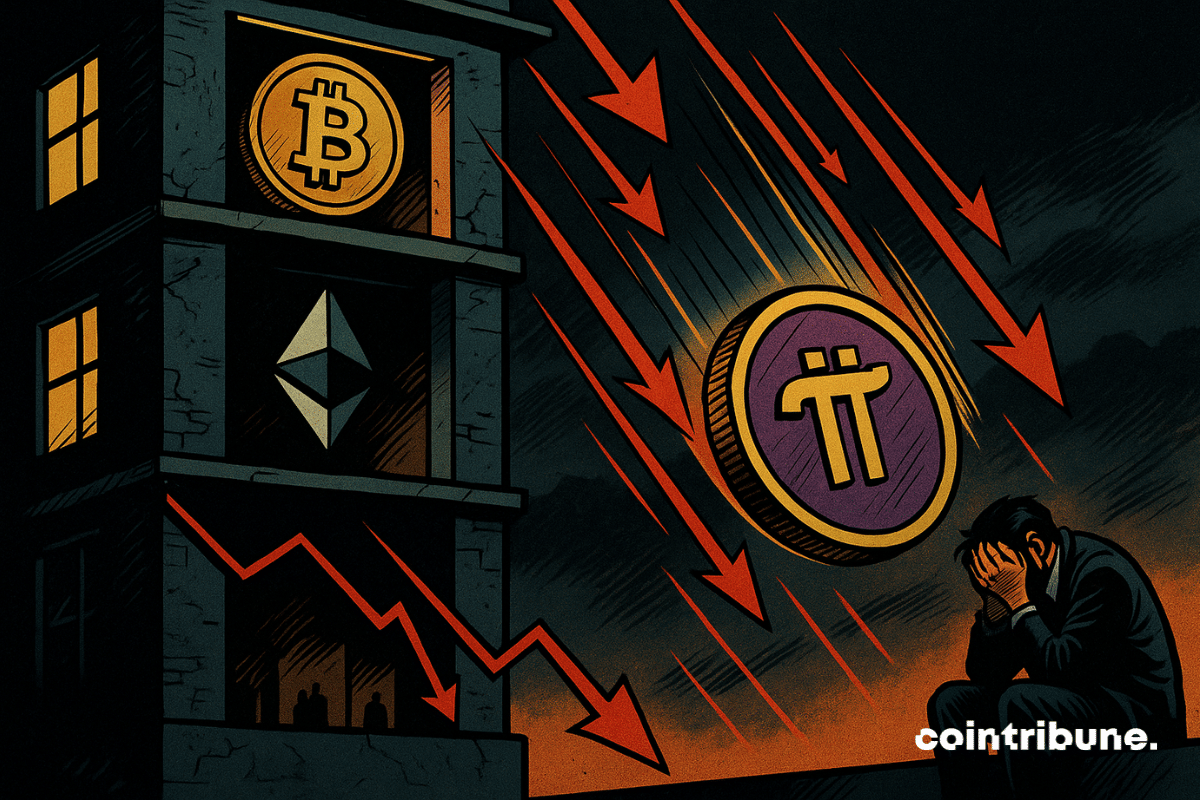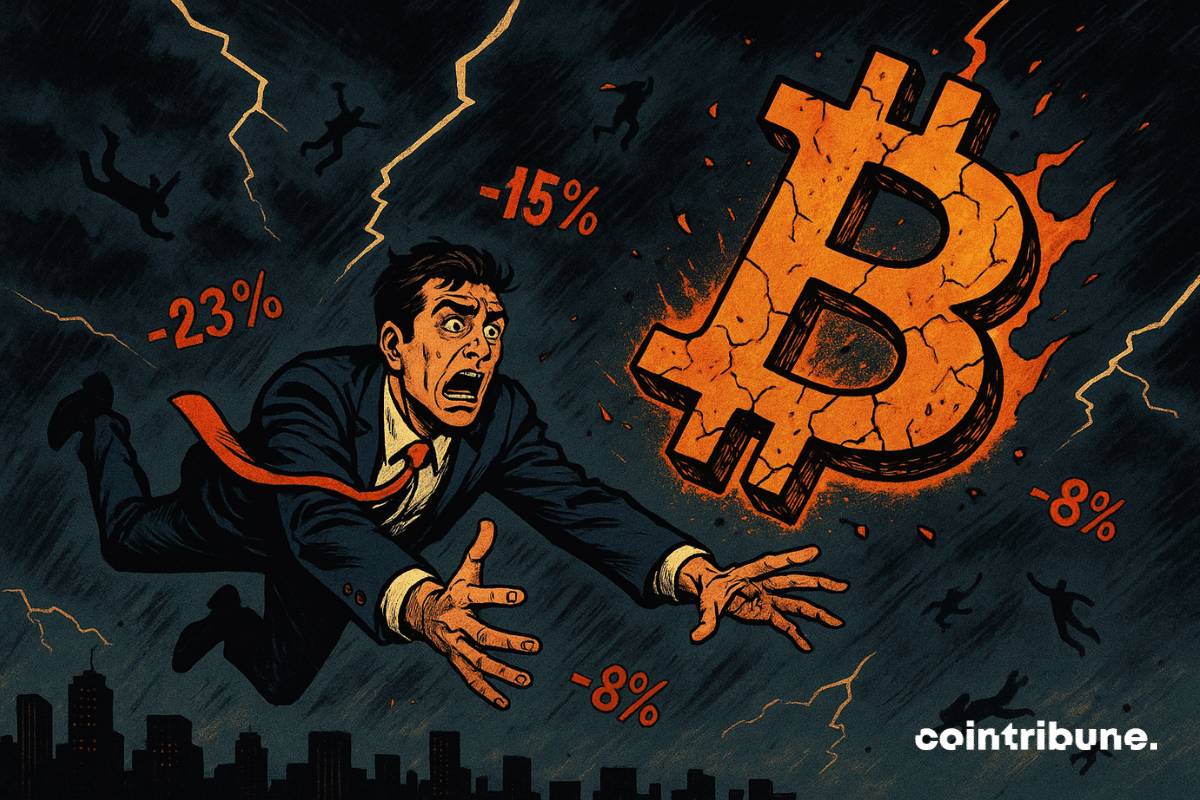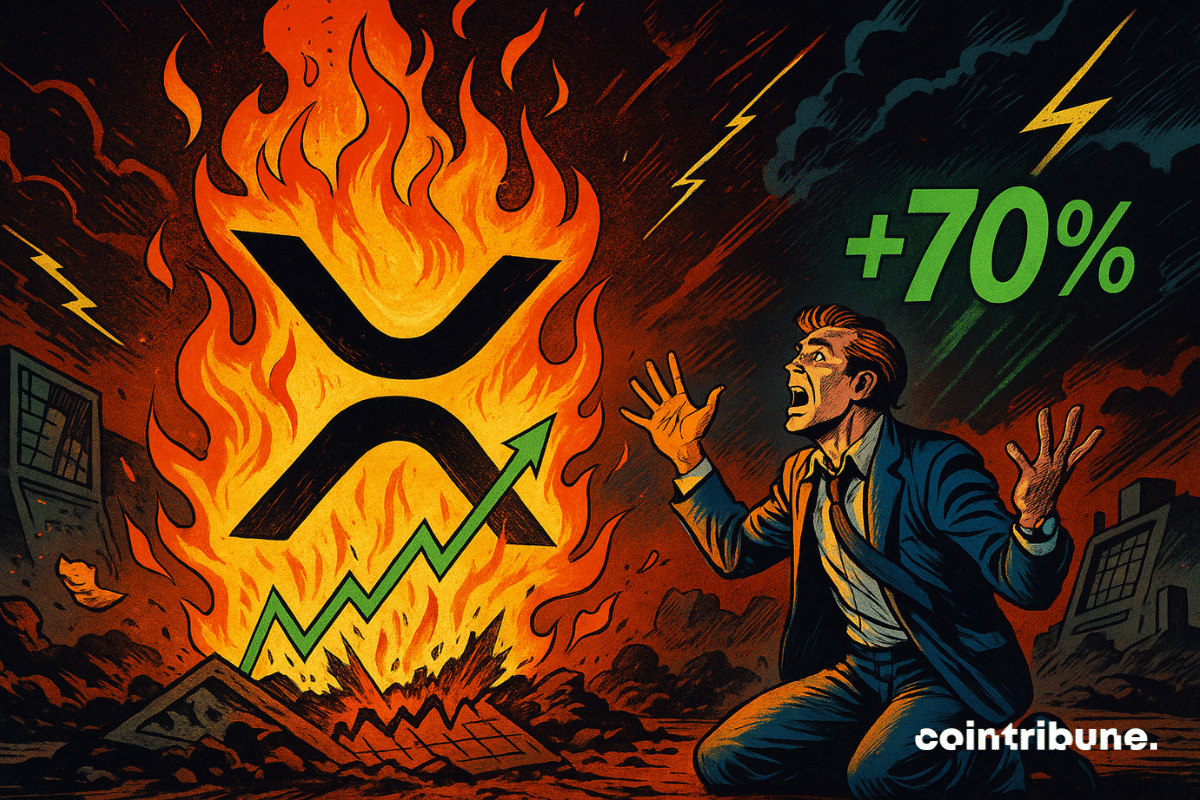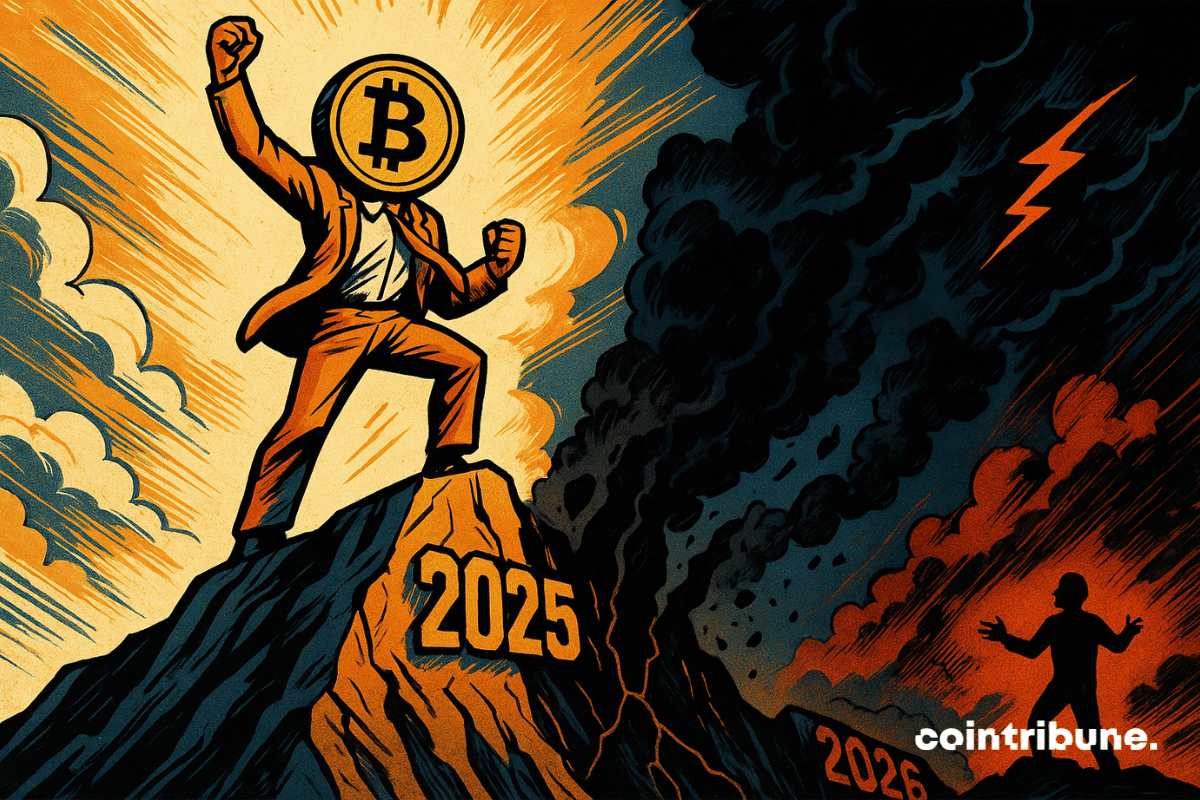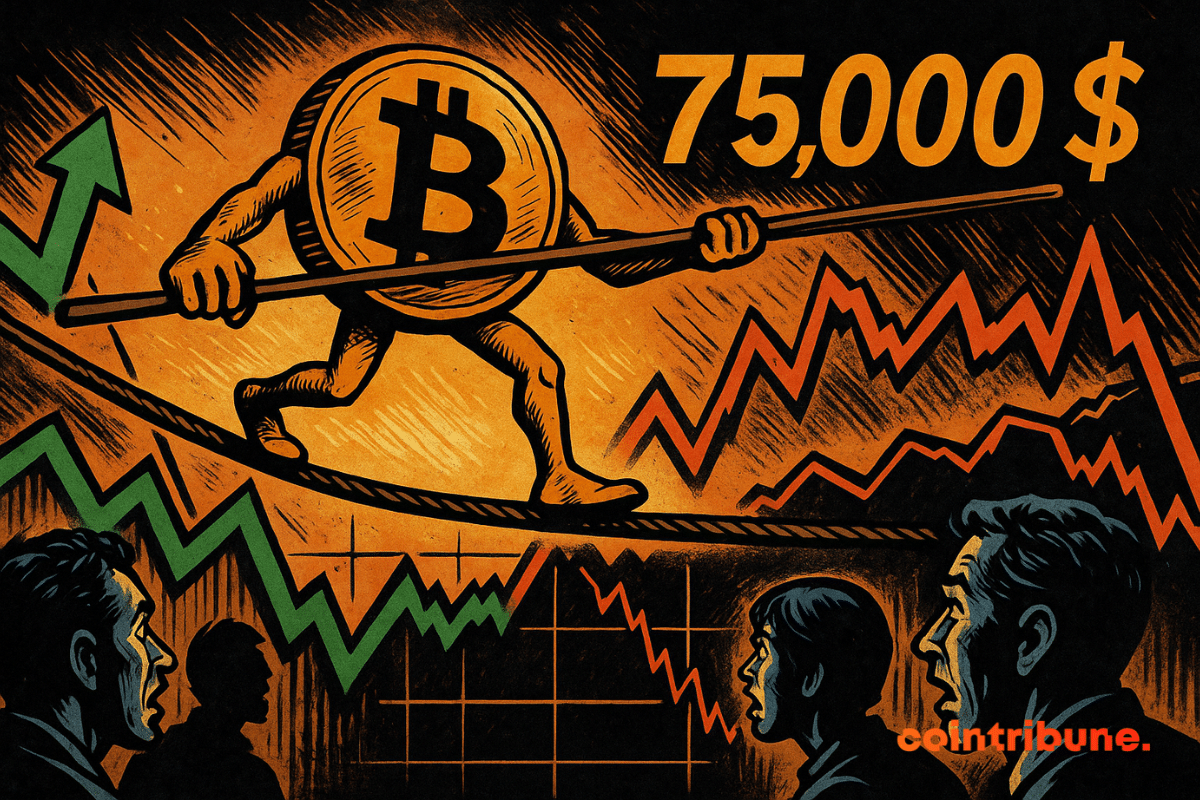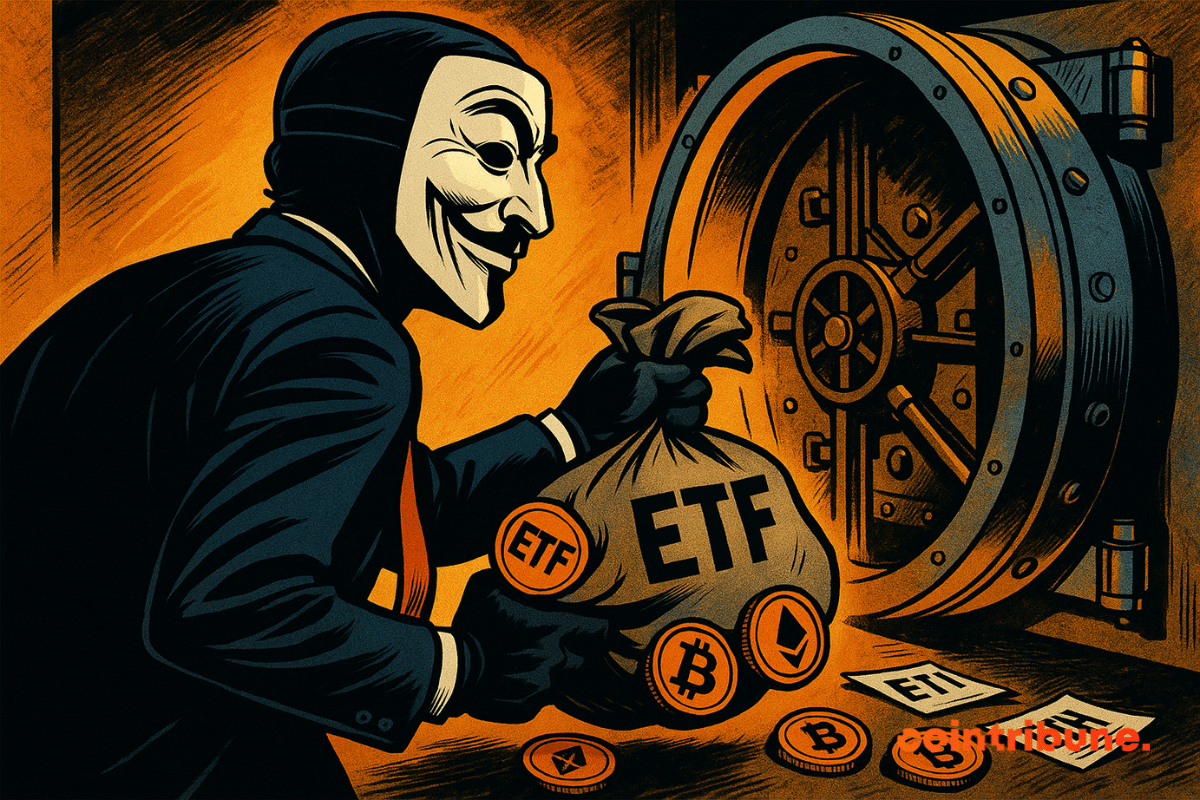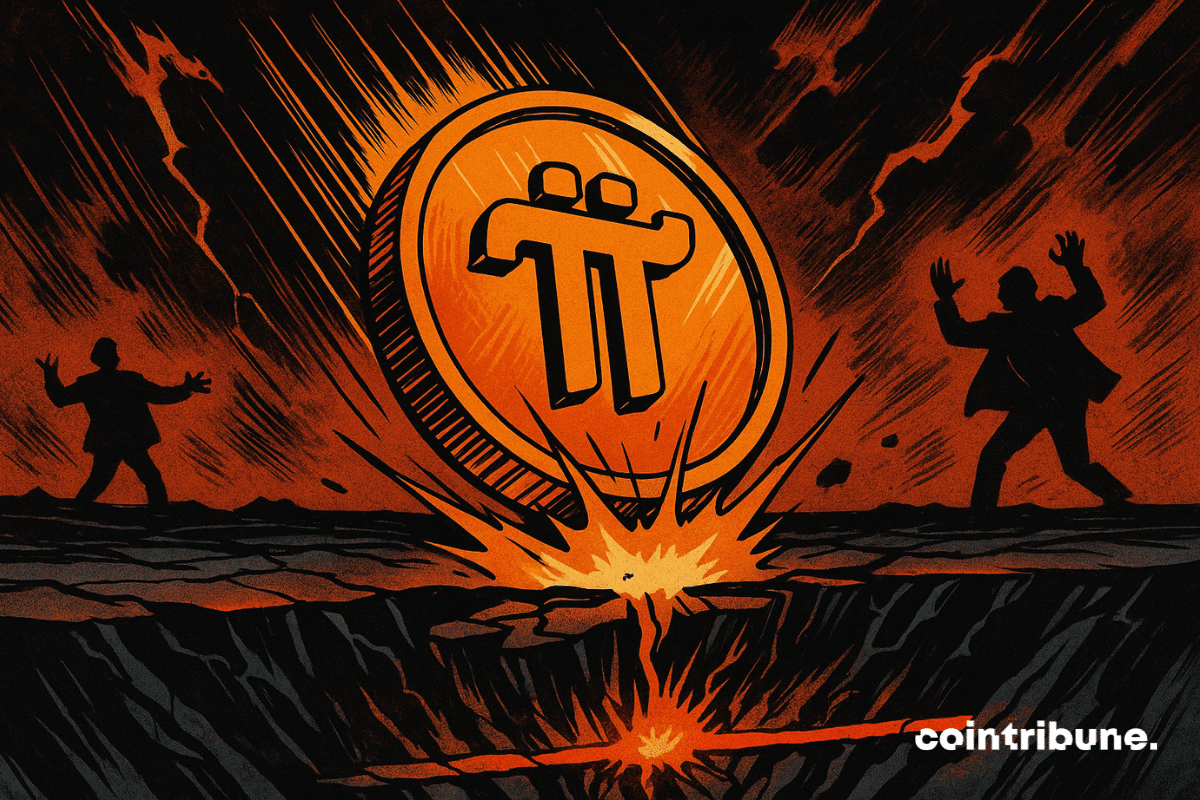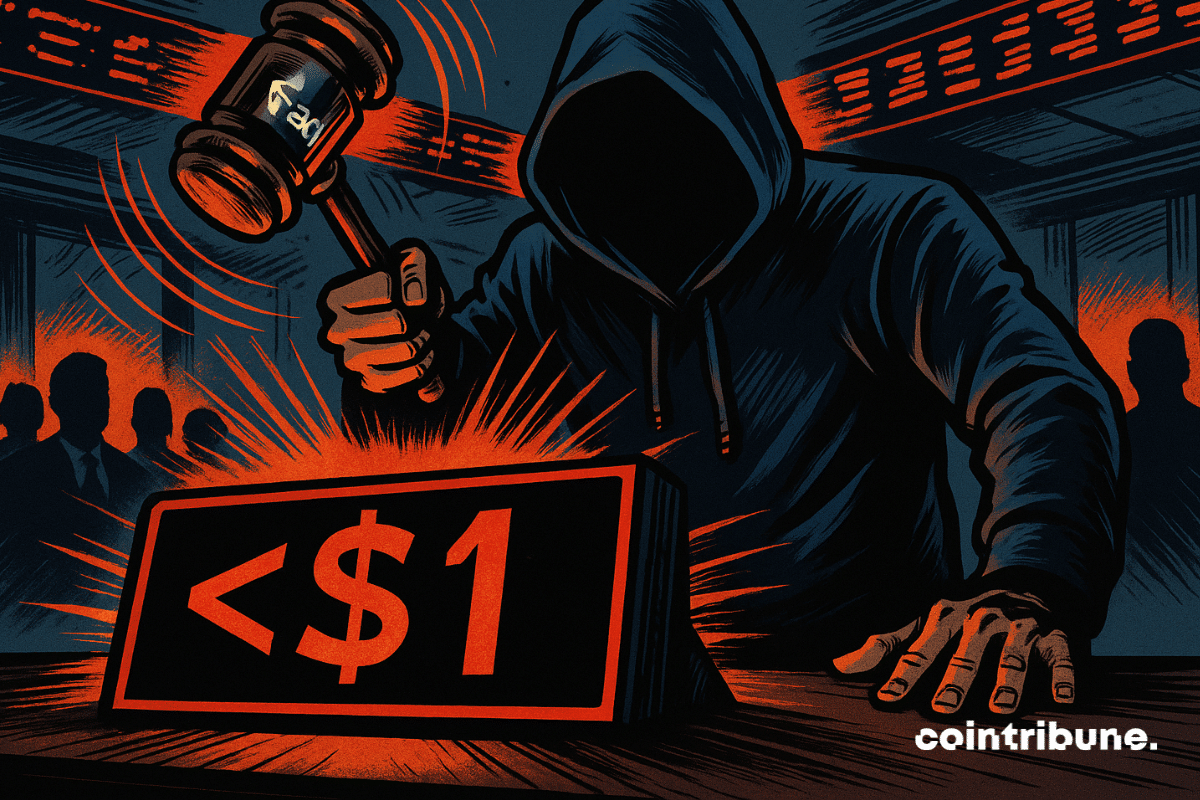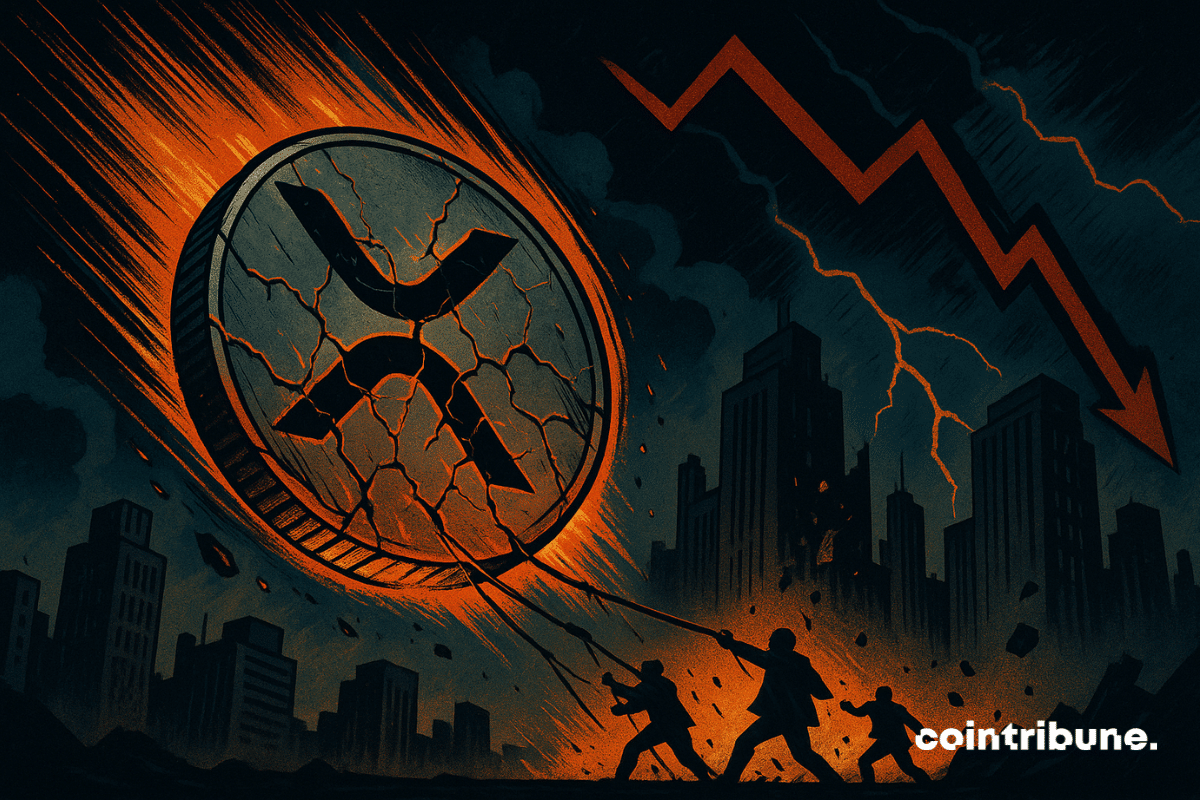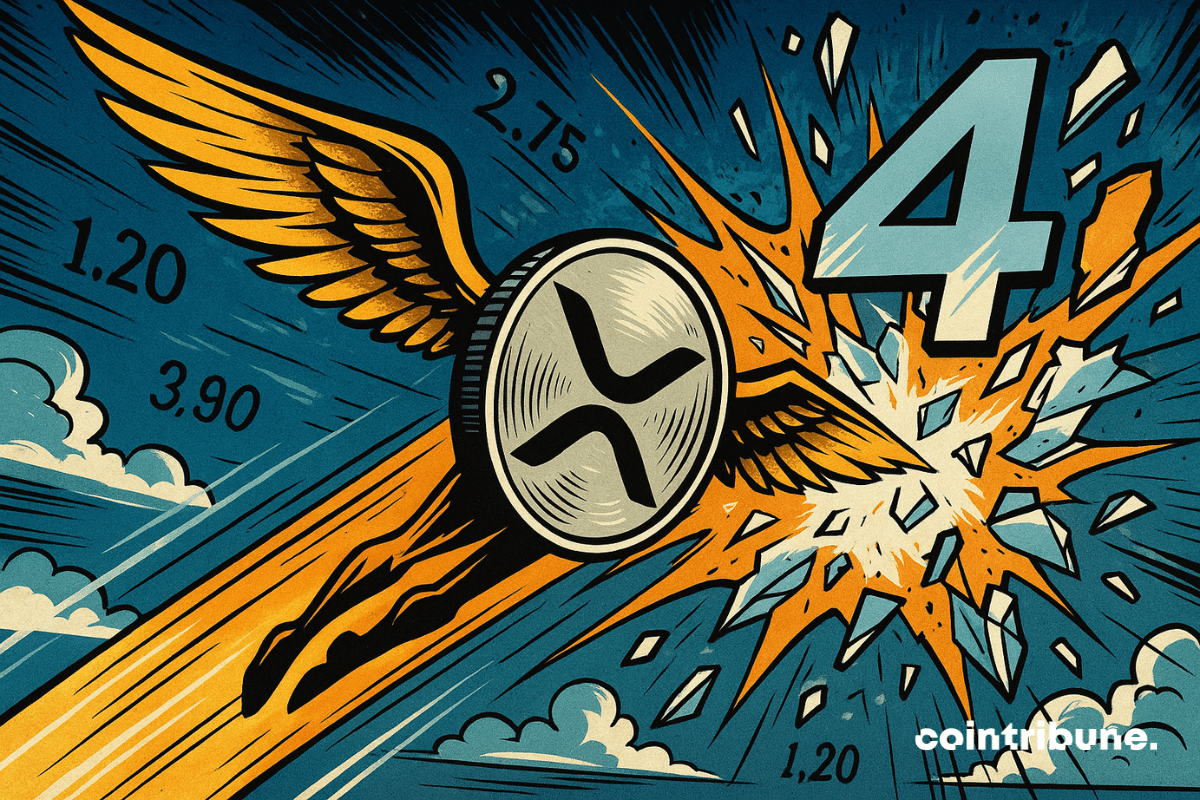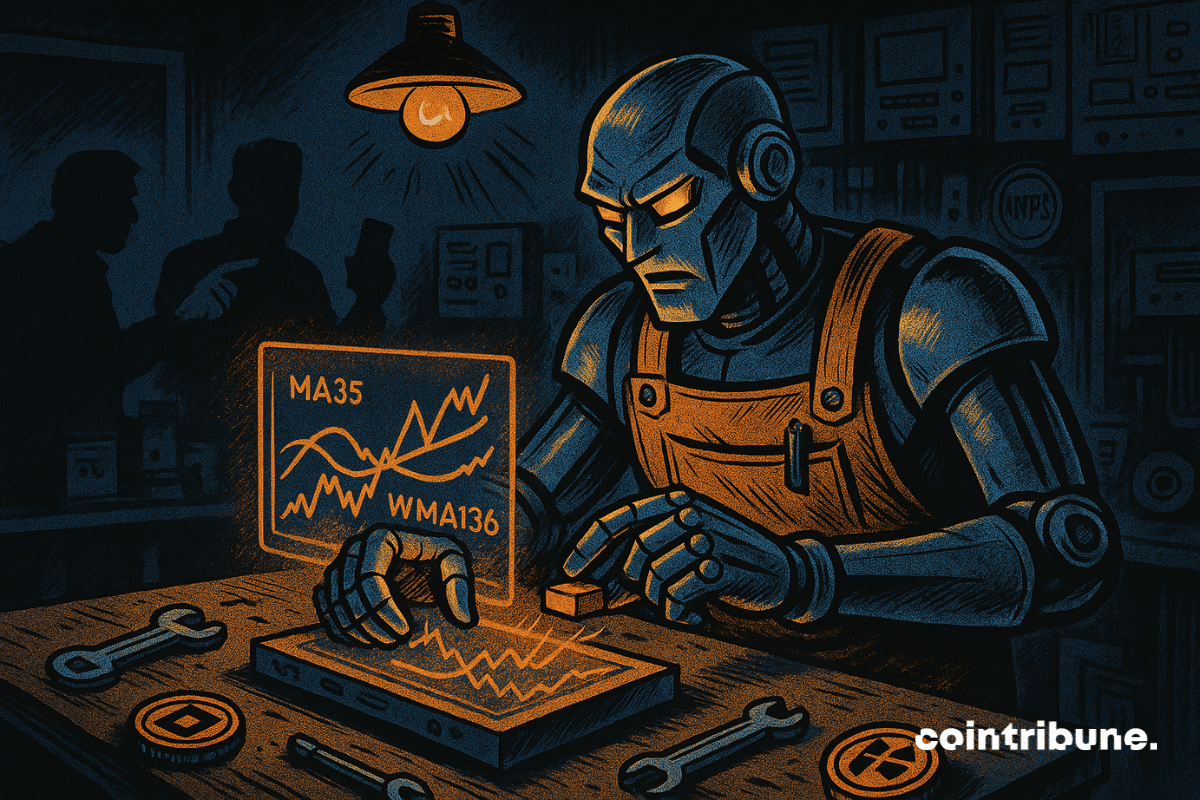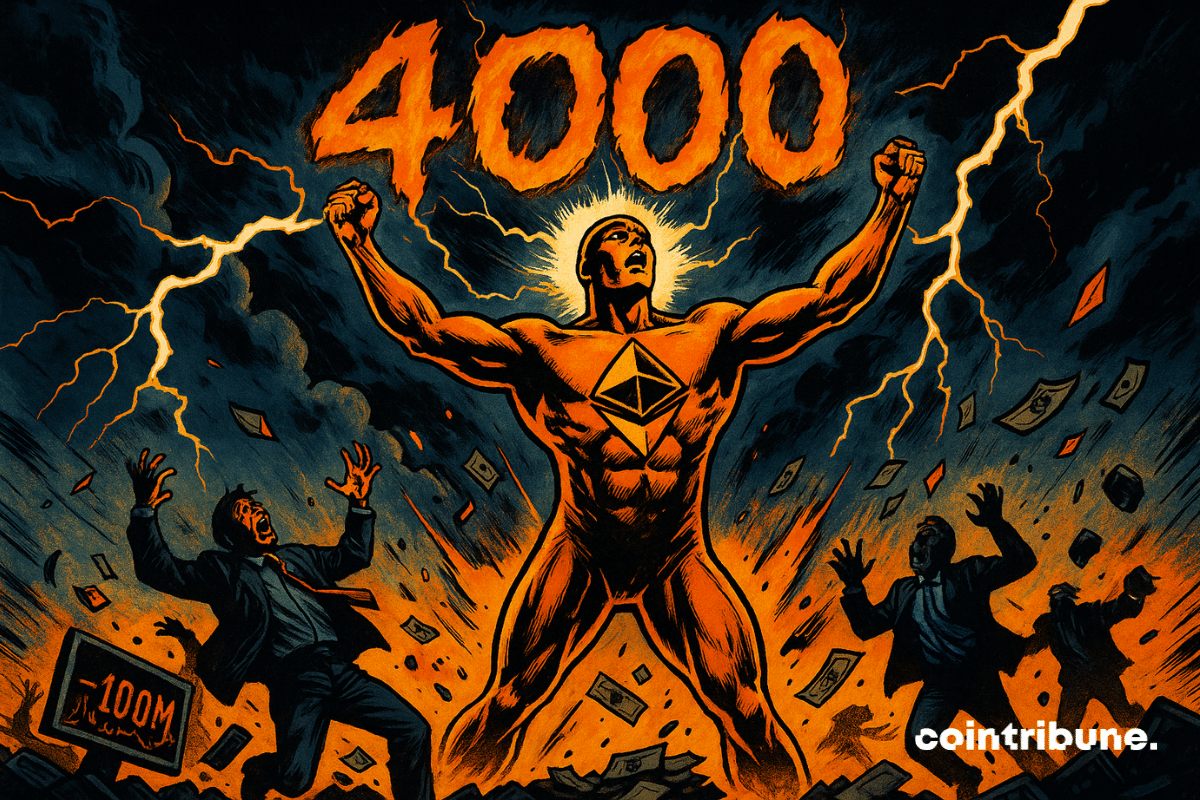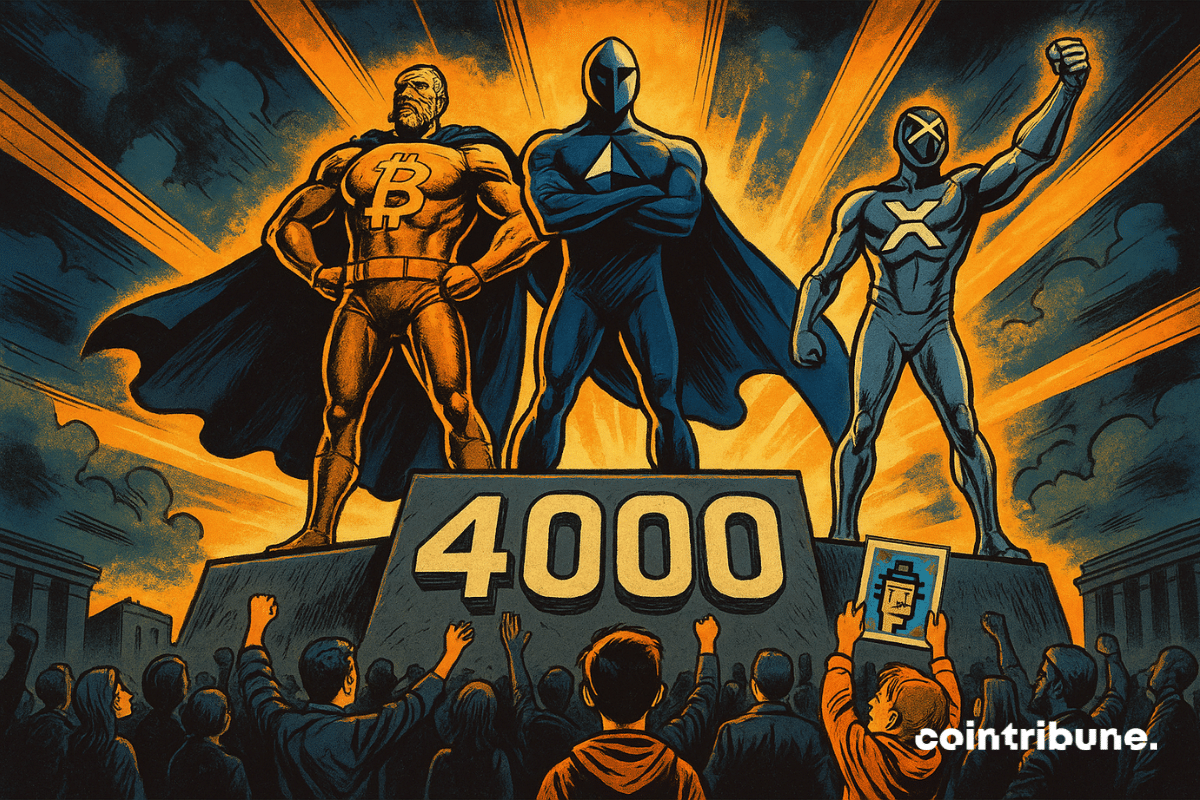In an ecosystem already weakened by bitcoin volatility, the project based on mobile mining dangerously approaches its historic low. Long supported by a massive but controversial community, Pi Network now faces an acute confidence crisis. Extreme correlation to BTC, selling pressure, technical indicators in the red: warning signals are piling up. Can the project still avoid going off the rails?
Theme Trading
While the bitcoin market seems stuck in a waiting phase, reserves are running low on OTC desks, those platforms where institutions buy without moving prices. The company Strategy, which has already acquired more than 182,000 BTC this year, finds itself on the front line. Facing a drying supply, pressure is mounting. What if the next bullish shock was preparing... silently?
After months of recovery, the bullish momentum of the bitcoin market is abruptly fading. All indicators, spot, derivatives, ETFs, turn red, revealing a drop in liquidity, a decline in risk appetite, and a general slowdown. The latest Glassnode report confirms a phase change: euphoria gives way to caution, in a fragile and unpredictable market context.
While the crypto market oscillates between economic uncertainties and renewed optimism, XRP finds itself once again at the center of attention. On the charts, a familiar pattern reappears, the same one that preceded a spectacular 70% surge last January. Is it a simple technical coincidence or the precursor to a new bullish rally? Signals are piling up, analysts are questioning, and the stakes are high: is XRP about to replay its explosive scenario?
Bitcoin flirts with 114,000 dollars, but behind this stability, some analysts are sounding the alarm. A new market reading, based on Elliott Wave theory, announces a peak at 140,000 dollars by the end of this year… followed by a sharp decline in 2026. As euphoria spreads among investors, this projection invites looking beyond the short term.
While financial markets collapse under the threat of new announcements related to the trade war orchestrated by Donald Trump, the crypto market takes everyone by surprise. Indeed, XRP and Ethereum are bouncing back sharply, breaking with an established bearish trend. Are these assets in the process of sustainably detaching from classic macroeconomic dynamics? In a context of tariff tensions and increased volatility, the crypto market's reaction raises questions about its ability to play a strategic alternative role.
While bitcoin oscillates around critical thresholds, between selling pressures and bullish technical signals, investors wonder: simple market breathing or prelude to a new surge towards 75,000 dollars
Bitcoin lost 7.5% after nearly touching $123,250, briefly reviving fears of a lasting correction. However, some analysts see an ideal configuration, described as a "perfect bottom." For them, this technical pullback would be less a sign of weakness than a strategic springboard announcing a major rebound.
Spot crypto exchange-traded funds (ETFs) are currently on a smooth sail, posting strong inflow records week-on-week. Although these investment products struggled during the early parts of the year following the broader market drop, their performances have picked up in this quarter—particularly in the U.S. market
In an already tense crypto market, XRP is drawing attention for the wrong reasons. Several technical and on-chain indicators are turning red, signaling growing selling pressure and marked investor disengagement. The decline in leverage exposure, combined with significant outflows, fuels the risk of key support breaks. If the momentum does not reverse quickly, crypto could enter a more pronounced correction phase, revealing increasing vulnerability to market uncertainties.
As distrust settles in the crypto ecosystem, Pi Network fuels tensions with a controversial decision: a voluntary token lockup in exchange for a mining bonus that can rise up to 200%. In a context of free-falling prices and lethargic liquidity, the initiative provokes the outrage of a community already tested by technical delays and the lack of use cases.
Driven by millions of supporters since its launch, Pi Network is currently experiencing a period of intense instability. The price of its token is falling sharply, approaching a concerning historical threshold. This project, once presented as a decentralized alternative accessible to all, now raises growing doubts about its viability. Caught between community enthusiasm and selling pressure, Pi Network finds itself at the center of discussions, crystallizing the tensions of a market where initial euphoria gives way to expectation.
Argo Blockchain risks delisting from Nasdaq after its shares fell below $1 for over 30 days, sparking investor concerns.
The XRP derivatives market has just experienced a major shock: $2.4 billion in open interest evaporated, and a 15% drop in price within a few days. This brutal withdrawal of leverage raises questions. Should we see it as a simple adjustment or the beginning of a deeper reversal? While some continue to bet on a bullish recovery, technical signals are becoming unclear and introducing doubt. Is XRP entering a prolonged turbulence zone?
As the crypto market wavers in uncertainty, XRP defies expectations. After bouncing back from a dip below $3, the asset rekindles projections towards $4. This sudden surge, amid massive liquidations, places XRP back at the heart of speculative play. The $4 threshold, forgotten since 2018, becomes a credible target for bullish investors in a climate where few assets manage to reverse the trend with such strength.
While traditional markets remain under pressure, bitcoin reaches a historic milestone: its realized capitalization exceeds 1 trillion dollars for the first time. This threshold, reflecting the capital actually engaged in the network, occurs at a moment when a Satoshi-era whale sells 80,000 BTC, or nearly 9 billion dollars, without shaking the price. A strong double signal, both technical and psychological, confirming the robustness of the market in the face of large-scale events.
XRP briefly crossed $3.65, its highest level in seven years, before plummeting to $3.09. This 15% correction raises questions about the strength of the rally in a context of increased volatility. Amid strategic portfolio movements, speculative pressures, and remnants of regulatory tensions, the market struggles to determine: is this a mere technical pullback or a signal of a deeper exhaustion?
As volatility shakes the entire crypto market, Ethereum stands out with unexpected stability. Even as Bitcoin and altcoins lose ground, ETH holds firm. This resistance is anchored in a robust technical setup, but above all, in a discreet accumulation led by strategic players. In the shadow of visible fluctuations, deep dynamics are taking shape, redefining the contours of a possible rally to come.
On July 24, nearly a billion dollars in leveraged positions were liquidated within a few hours, triggering a wave of sales on derivative platforms. XRP, Dogecoin, Ethereum, and Solana all plummeted, caught up in an overheating mechanism fueled by massive speculative bets. A dark day that reminds us how volatility remains the rule, not the exception, in the crypto universe.
Every token unlock by Ripple rekindles tensions surrounding XRP. On August 1st, one billion tokens will be released from escrow, according to a well-established monthly schedule. Predictable yet always scrutinized, this movement fuels speculation about a potential market impact, as XRP attempts to breach a crucial technical threshold. In an ever-nervous crypto climate, Ripple's strategy raises as many questions as it reassures.
In a crypto market plagued by uncertainty, XRP surprises. While Bitcoin wavers and Ethereum experiences sharp fluctuations, Ripple's asset aligns bullish technical signals. Long burdened by its legal troubles, the crypto is now shaping a unique market structure, blending support stability with order book density. This atypical trajectory intrigues analysts and traders. XRP could well be gearing up for a powerful return to levels previously thought unreachable.
The current global chaos is not a product of chance. According to a theory developed by historians Neil Howe and William Strauss, we are entering a destructive cycle that reshapes societies every 80 to 100 years. This major transformation could disrupt the global economy, financial markets, and redefine the geopolitical order as we know it.
As regulation tightens and corporate treasuries turn to crypto, a discreet but strategic battle intensifies around Ether. By buying nearly $259 million worth of ETH in a single transaction, SharpLink Gaming gains the upper hand against BitMine Immersion Technologies. This massive acquisition reignites a competition that has now become central: the control of the largest public reserves of Ether, in a market where every crypto held by institutional hands redefines the balance of power.
The explosive rise of the HYPE token is shaking up traders and reinventing automated strategies. This native token of the Hyperliquid perp-Dex has seen its trading volume increase tenfold in just three months. Listed on several major exchanges, it offers exploitable volatility for those who know how to take advantage of it. The good news: coding is no longer required to build an effective bot. Thanks to Runbot, you can automate a trend-following strategy in a simple, fast, and visual way. Here's a step-by-step guide to create, test, and deploy a HYPE strategy using the most powerful no-code tools available today.
Bittensor (TAO) is establishing itself as the rising star in the crypto sector with a surge of +17%. Driven by excitement for artificial intelligence and strong technical signals, TAO is capturing the attention of traders while consolidating its position as a leader among AI cryptos.
The crypto hierarchy is shaking. After months of uncontested supremacy of Bitcoin, a new dynamic is taking hold: altcoins are regaining ground. Ethereum is surging, XRP is hitting a record, and cryptocurrencies like Chainlink, Cardano, and Avalanche are accelerating. Since the beginning of July, the curves are reversing, and the flows are shifting. The signals are aligning. Should we see this as the long-awaited return of an altcoin season, that phase where the market reorganizes around its challengers? A trend is emerging, and it is not going unnoticed.
Ethereum surprised the market by surpassing $3,800, driven by massive liquidations of short positions. This sudden movement, supported by strong technical signals and increased demand, places the asset back in the spotlight. While some altcoins follow the trend, this resurgence of vitality could mark a turning point for the crypto market.
The threshold has just been crossed: altcoins are once again worth $1.5 trillion. While Bitcoin is struggling against its resistance levels, part of the inflows seem to be migrating towards secondary cryptos, reviving the scenario of an altseason. This rotation, often heralding phases of intense speculation, occurs against the backdrop of a major technical break. And in analytical circles, the countdown seems to have begun.
The crypto market has just crossed the symbolic threshold of 4 trillion dollars in capitalization, a level unmatched since the bull run of 2021. However, this push goes far beyond a simple speculative rebound. It reflects a reallocation of capital towards major assets, a renewed confidence among investors, and a silent transformation of exchange infrastructures. More than just a strong comeback, it seems that the crypto ecosystem is entering a new phase of maturity.
While the crypto market struggles to regain its breath post-halving, XRP, which has been relegated to the background for years amid price inertia and legal battles, is now flirting with a market capitalization of nearly 200 billion dollars. This spectacular resurgence contrasts with the retreat of Bitcoin and fuels the idea of a new cycle dominated by altcoins. This trend reversal raises questions: Is XRP in the process of redefining the power dynamics within the crypto market?
